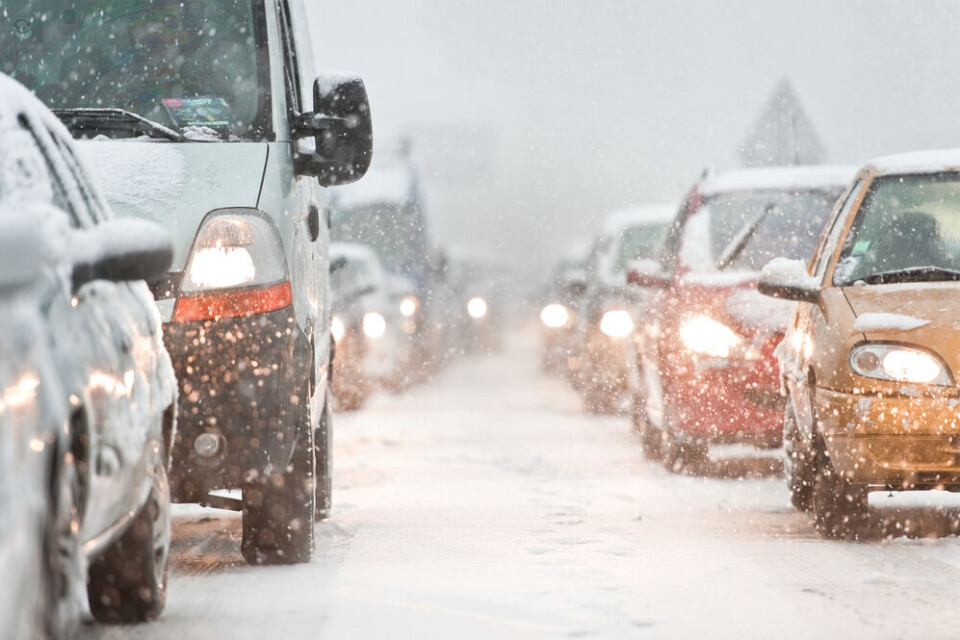-
What new licence rules are set to change for older drivers in France
Changes are set to be implemented across the EU in the coming years
-
Tough Airbnb rules in Marseille prompt many property owners to sell
City council reduce time that a property can be rented to short-term guests
-
Why the price of chocolate is skyrocketing in France this Easter
Certain products have seen prices increase by 34% as cheaper store brands are hit harder than global ones
4 tips to stay safe and check icy roads in real-time in France
We cover journey planning, safer driving - and tyre socks

Many areas of France see road conditions worsen over winter, particularly in the north, central, and mountainous areas.
Whilst there are some rules in place, such as mandatory winter tyres in certain areas required by the loi montagne, unpredictable weather can affect drivers.
Overnight frosts, black ice, and snow and rain can all impact driving conditions in winter, leading to weather warnings in departments for neige-verglas.
Below, we give tips for driving when such warnings are in place.
Drive doucement
The first tip is straightforward: drive carefully. Drive slower (but not too slow if it is dangerous, such as on main roads), be more aware of your surroundings and of your actions.
Try to avoid harsh or sudden actions, such as sudden jerks of the steering wheel or putting your foot down hard on the pedals. This will help reduce the risk of your car sliding on the ice even if it takes you longer to reach your destination.
Use main roads, do not take detours
When neige-verglas warnings are in place, however, vehicles should stick to main roads, including autoroutes (motorways) and nationale or departmental roads when possible and not take country road ‘shortcuts’.
These roads have a higher number of drivers, and are more important for transportation, commuting, etc and are more likely to be salted and cleared of snow.
Smaller and more rural roads may be left untouched after poor weather, either blocked by snow or icy throughout the entire day.
Bridges and tunnels are also susceptible to dangerous conditions, and where possible should be avoided (although this may be more difficult depending on where you are driving).
Check your itinerary before leaving
France’s traffic service Bison Futé offers a ‘winter road’ map which shows the state of major roads in real-time. It includes a live-feed of a number of cameras placed on main roads, so you can check the weather conditions and traffic levels.
Combine this with a glance at Météo France's official weather warnings, particularly if driving a long distance to a place where you are not familiar with the usual weather patterns.
Read more: Is this week’s -31.4C amongst France’s coldest ever temperatures?
Keep your car well-stocked (including with ‘socks’)
Alongside some typical essentials for the boot of your car in case of a breakdown – warm blanket, set of suitable winter clothes, food and drink, and a torch – you can stock your car with gear to improve safety when driving.
The loi Montagne makes snow tyres mandatory in some parts of France between November and April, however snow tends to fall at least a couple of times per winter in many areas where this is not in force.
A set of winter tyres can be useful, although they are expensive if only used rarely, and taking them on and off again multiple times to prolong their quality can be a nuisance.
A good alternative is the use of chaussette neige, or winter snow socks, for tyres.
You can keep a set in the boot and put them on as needed. They are much cheaper than winter tyres (sometimes around 75% cheaper) and can be taken on and off again quickly.
They are damaged when driving on plain asphalt or well-gritted roads, however, so it is best to take them off when driving on ‘safer’ roads.
Related articles
Six changes for drivers and road rules in France in 2024
‘Speed bumps in France are dangerous for motorcyclists like me’
























